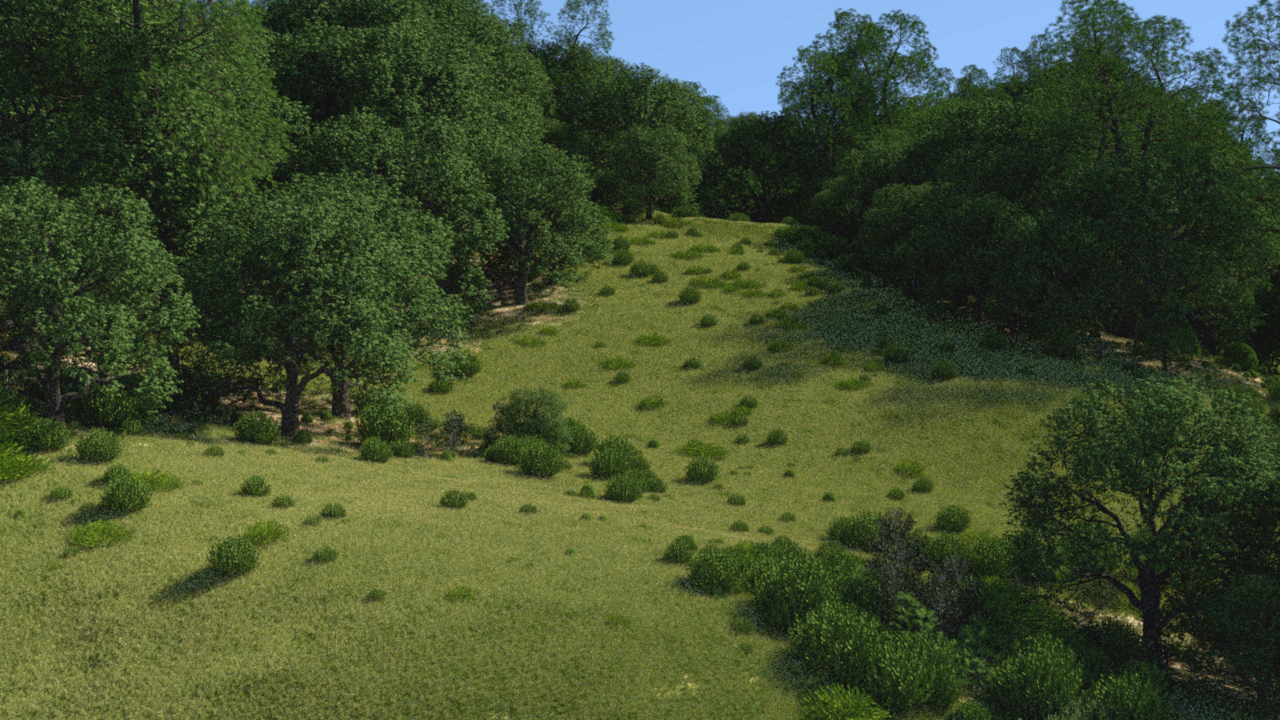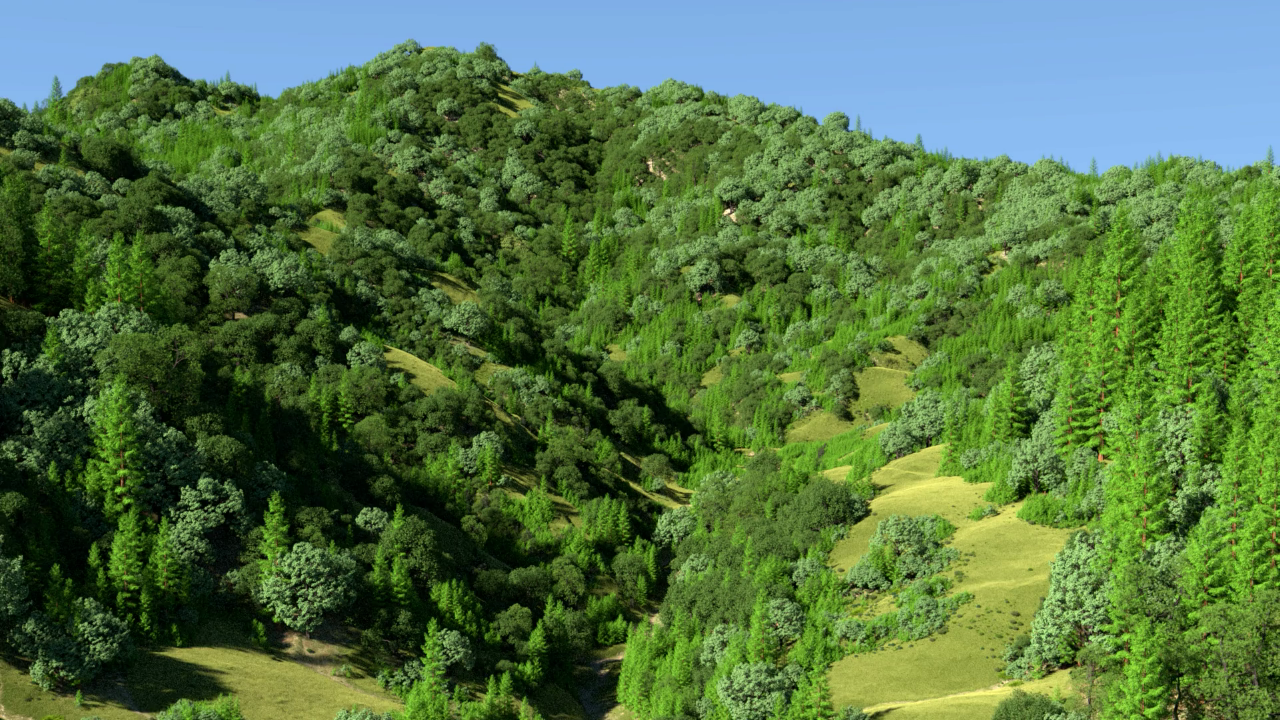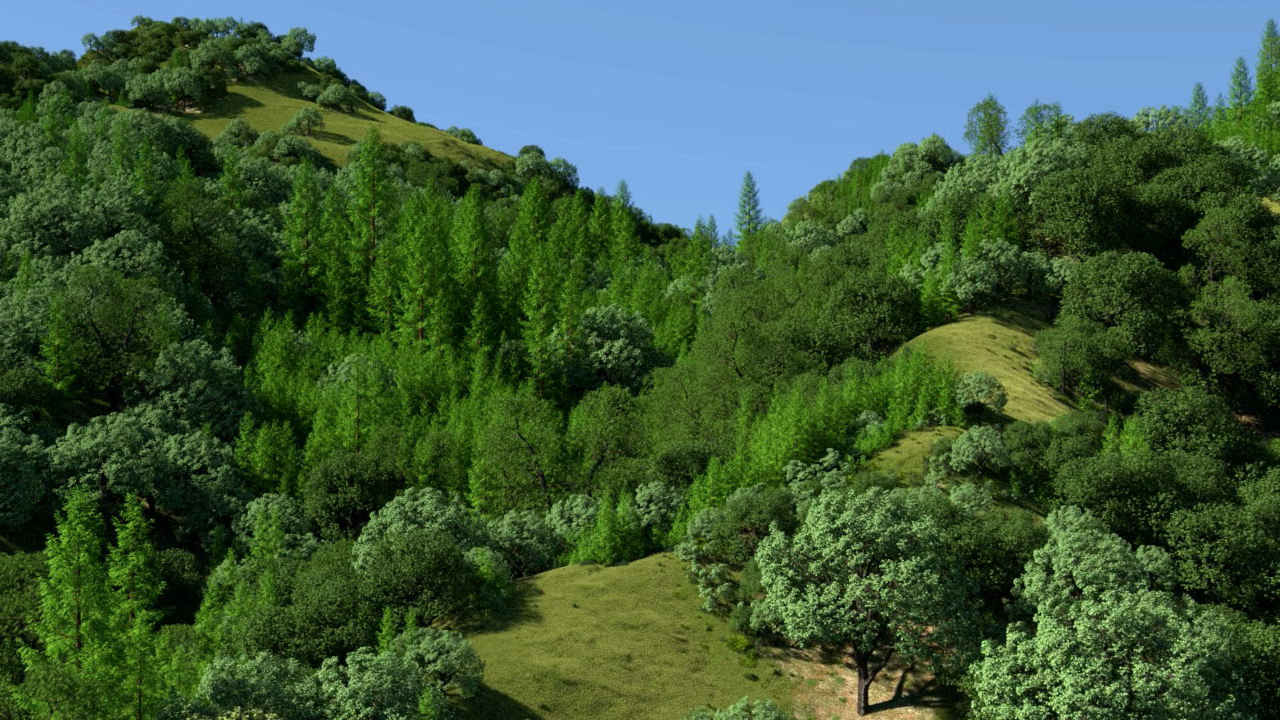Talk to us
No meetings are currently scheduled.
In computer graphics populating a large-scale natural scene with plants in a fashion that both reflects the complex interrelationships and diversity present in real ecosystems and is computationally efficient enough to support iterative authoring remains an open problem. Ecosystem simulations embody many of the botanical influences, such as sunlight, temperature, and moisture, but require hours to complete, while synthesis from statistical distributions tends not to capture fine-scale variety and complexity. Instead, we leverage real-world data and machine learning to derive a canopy height model (CHM) for unseen terrain provided by the user. Trees in the canopy layer are then fitted to the resulting CHM through a constrained iterative process that optimizes for a given distribution of species, and, finally, an understorey layer is synthesised using distributions derived from biome-specific undergrowth simulations. Such a hybrid data-driven approach has the advantage that it incorporates subtle biotic, abiotic,and disturbance factors implicitly encoded in the source data and evidences accepted biological behaviour, such as self-thinning, climatic adaptation, and gap dynamics.
Images



